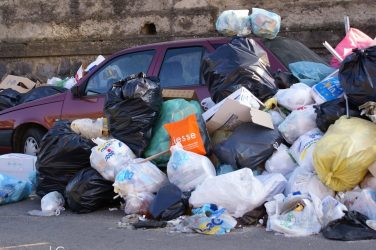A French explorer and his team have discovered 1.6 metric tons of plastic waste on the Himalayas, highlighting the pervasive issue of plastic pollution even on the world’s highest peaks. Luc Boisnard, a 53-year-old businessman and experienced mountaineer, describes the mountains as turning into gigantic landfills, with oxygen cylinders, cans, tents, shoes, and other debris scattered behind every rock. Determined to clean up the high-altitude environments, Boisnard has launched the Himalayan Clean-Up operation and association.
Boisnard’s recent expedition to Makalu, an 8,485-meter peak, marks his second effort after successfully climbing Mount Everest in 2010. Simultaneously, another member of the association has returned from Annapurna (8,091 m). Together, with the help of Sherpas, they have already removed 3.7 metric tons of waste, with 45% of it being plastic (1,100 kg from Makalu and 550 kg from Annapurna). This further demonstrates the omnipresence of petroleum-derived plastic, coinciding with the start of the second round of negotiations in Paris for a legally binding treaty under the United Nations to end plastic pollution by the end of 2024.
The majority of the waste found in the Himalayas consists of remnants from high-altitude expeditions, accumulating since the region first opened to tourism in the 1920s. In an attempt to lighten their backpacks, some inexperienced climbers intentionally leave behind personal belongings at base camps or even on the trails leading to the peaks, showing little regard for the environment. Boisnard states that some items are even thrown into the Himalayan glaciers, where they will not resurface for another 200 years. These plastics slowly disintegrate, causing long-term pollution not only in the landscapes but also in the rivers. In 2019, a scientific study revealed the presence of microplastics (such as polyester, acrylic, nylon, and polypropylene fibers) above 8,000 meters, including in the snow.
Apart from the waste issue, the primary objective of the future plastic treaty will be to “reduce the use and production of plastic.” Plastic production has more than doubled in the past 20 years, reaching 460 million metric tons annually and could triple by 2060 if no action is taken.
Two-thirds of plastic is discarded after a single or few uses, and less than 10% of plastic waste is recycled. Plastic, in various sizes, is not only found on mountains but also in massive quantities at the bottom of oceans, in glaciers, in the stomachs of birds, and even in the human bloodstream, breast milk, and placenta.
Urgent global action is needed to address this escalating plastic pollution crisis, both in the Himalayas and worldwide, to protect the environment and ensure a sustainable future.









Show Comments